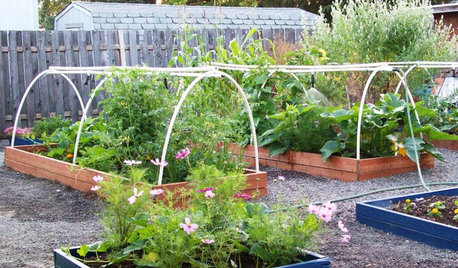Apple Tree poor fruit production
ksfarm_girl
13 years ago
Related Stories

GARDENING AND LANDSCAPINGCrazy for Fruit Trees
Whether a single citrus or a mini apple orchard, even the smallest landscape space can bear deliriously delicious fruit
Full Story
EDIBLE GARDENSHow to Add an Apple Tree to Your Edible Garden
Readily available, beautiful and fragrant, apple trees offer four-season interest along with crisp, juicy fruit
Full Story
FARM YOUR YARDIf You Have Room for Only One Fruit Tree ...
Juice up a small garden with one of these easier-care or worth-the-effort fruit trees for a mild climate
Full Story
EDIBLE GARDENSHow to Grow 10 Favorite Fruit Trees at Home
Plant a mini orchard in fall, winter or early spring to enjoy fresh-off-the-tree fruit the following year
Full Story
MOST POPULARHow to Get Rid of Those Pesky Summer Fruit Flies
Learn what fruit flies are, how to prevent them and how to get rid of them in your home
Full Story
GARDENING GUIDESHow to Keep Your Citrus Trees Well Fed and Healthy
Ripe for some citrus fertilizer know-how? This mini guide will help your lemon, orange and grapefruit trees flourish
Full Story
FALL GARDENING5 Fall Fruits You Can Grow in Containers
Brighten your porch or patio with a potted pomegranate, kumquat, blueberry bush or another great fall fruit
Full Story
BENEFICIAL INSECTSAttract Pollinators for a Productive Edible Garden
You can lure bees, butterflies and birds into your yard with the right flowers and nesting spots
Full Story
EDIBLE GARDENSHow to Grow Your Own European and Asian Pears
Try these trees for their good looks, delicious fruit and wide range of sizes — plus you can espalier them
Full Story
GARDENING GUIDESGreat Design Plant: Kumquats for a Juiced-Up Winter
Grow it for the edible fruit or its good looks alone. This citrus cousin will brighten any gray winter day
Full Story






myk1
olpea
Related Professionals
Harrison Landscape Architects & Landscape Designers · Marina Landscape Architects & Landscape Designers · Towson Landscape Architects & Landscape Designers · Brooklyn Center Landscape Architects & Landscape Designers · Mooresville Landscape Contractors · Wilmington Landscape Contractors · Caldwell Landscape Contractors · Davis Landscape Contractors · Galt Landscape Contractors · Gresham Landscape Contractors · Lake Zurich Landscape Contractors · Middleton Landscape Contractors · Petaluma Landscape Contractors · Baileys Crossroads Landscape Contractors · San Pablo Landscape Contractorsdenninmi
alan haigh
ksfarm_girlOriginal Author
cinsay
olpea
foolishpleasure
foolishpleasure
alan haigh
olpea